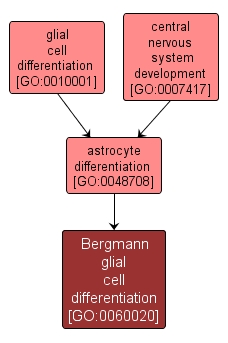GO TERM SUMMARY
|
| Name: |
Bergmann glial cell differentiation |
| Acc: |
GO:0060020 |
| Aspect: |
Biological Process |
| Desc: |
The process whereby neuroepithelial cells of the neural tube give rise to Brgmann glial cells, specialized bipotential progenitors cells of the cerebellum. Differentiation includes the processes involved in commitment of a cell to a specific fate. |
|

|
INTERACTIVE GO GRAPH
|














